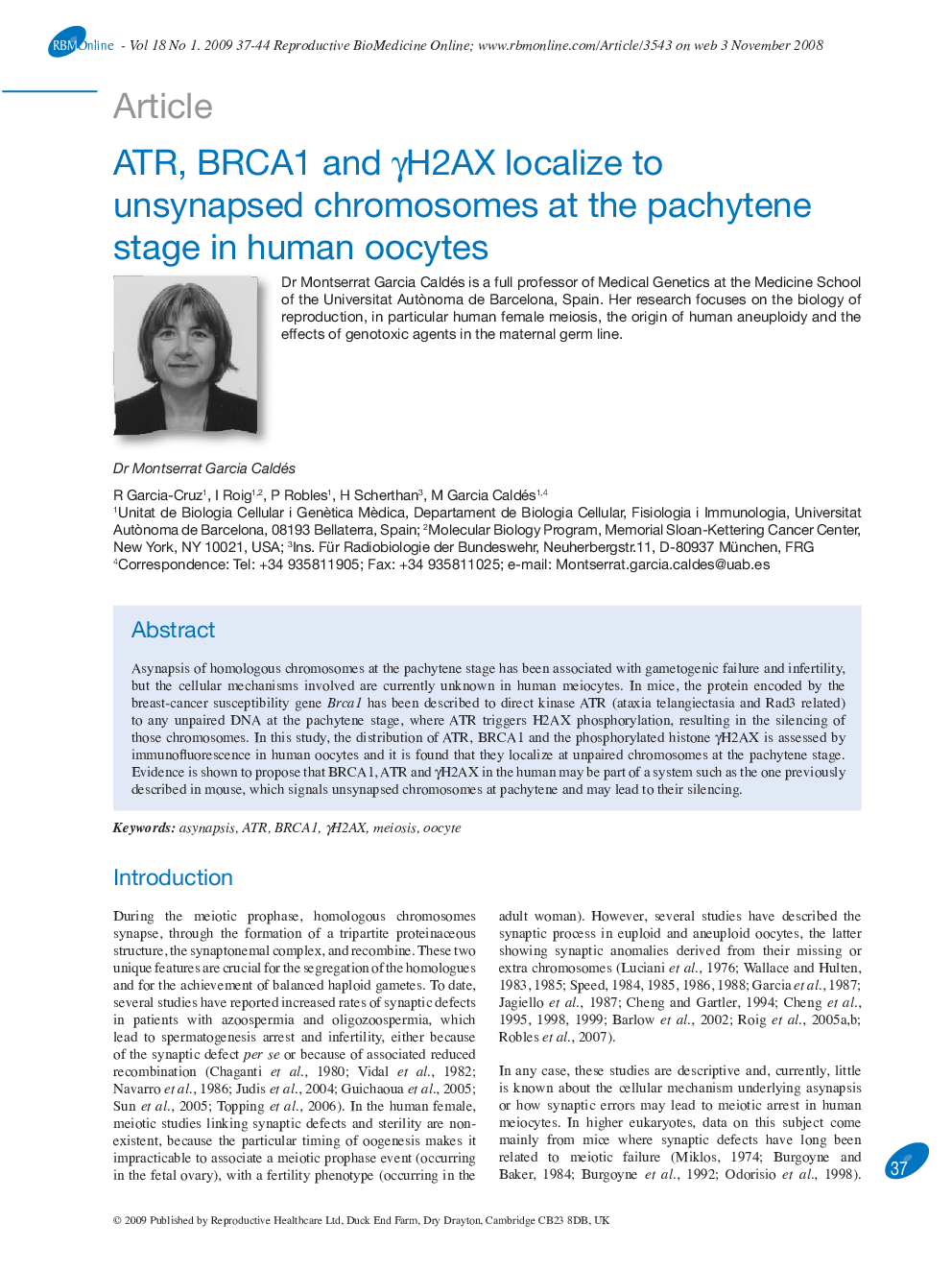| Article ID | Journal | Published Year | Pages | File Type |
|---|---|---|---|---|
| 3972276 | Reproductive BioMedicine Online | 2009 | 8 Pages |
Asynapsis of homologous chromosomes at the pachytene stage has been associated with gametogenic failure and infertility, but the cellular mechanisms involved are currently unknown in human meiocytes. In mice, the protein encoded by the breast-cancer susceptibility gene Brca1 has been described to direct kinase ATR (ataxia telangiectasia and Rad3 related) to any unpaired DNA at the pachytene stage, where ATR triggers H2AX phosphorylation, resulting in the silencing of those chromosomes. In this study, the distribution of ATR, BRCA1 and the phosphorylated histone γH2AX is assessed by immunofluorescence in human oocytes and it is found that they localize at unpaired chromosomes at the pachytene stage. Evidence is shown to propose that BRCA1, ATR and γH2AX in the human may be part of a system such as the one previously described in mouse, which signals unsynapsed chromosomes at pachytene and may lead to their silencing.
